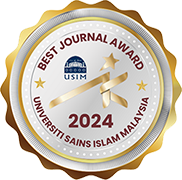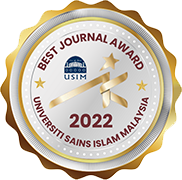الهدي والأضاحي بين الماضي والحاضر ودورها في تحقيق مقاصد الحج الكبرى
REVISITING Al-HADYU AND Al-UDHIYYAH SACRIFICE RITUALS: UNVEILING THEIR SIGNIFICANCE IN RELATION TO THE MAJOR OBJECTIVES OF THE HAJJ PILGRIMAGE
DOI:
https://doi.org/10.33102/mjsl.vol11no1.442Keywords:
al-hadyu, Islamic law, maqāṣid, hajj, al-udhiyaAbstract
This comprehensive study examines al-hadyu and al-udhiyyah sacrifice rituals within the framework of the major objectives of the Hajj tradition. The research aims to shed light on the profound role these rituals play in Islam, transforming them from a symbol of showmanship, association, and arrogance during the era of Jahiliyya (pre-Islamic period of ignorance) into a manifestation of monotheism, gratitude, and remembrance of the Creator. Employing a meticulous research methodology, this study explores the historical context surrounding al-hadyu and al-udhiyyah rituals, analyzing their evolution and transformation under the influence of Islam. The researcher highlights the authentic scriptural references from the holy Quran and Sunnah, emphasizing the rituals' significance and their role in shaping the ethical and theological identity of Muslims. Additionally, the study underscores their contribution to the cultivation of virtuous manners that uplift individual spirits and foster self-dignity, ultimately contributing to the establishment of a peaceful, stable, and secure society. Furthermore, this research brings attention to recent civilizational advancements in the execution of these rituals, particularly exemplified by the Kingdom of Saudi Arabia's initiative to harness the potential of al-hadyu and al-udhiyyah rituals. The study examines the impact of this initiative on achieving the objectives of Shari'a (Islamic law) and its vital role in preserving the sanctity of places of worship, ensuring their cleanliness, and safeguarding them against harm and corruption. The research is structured into an introduction, three sections covering the historical context, the significance of the rituals, and their impact on social cohesion, and a conclusion summarizing the findings. The outcomes of this study hold significant implications for the international community, as it contributes to a deeper understanding of the transformative power of religious rituals in fostering unity, cooperation, and the promotion of noble values across cultures and societies.
ملخص البحث
يتناول هذا البحث دراسة نسك الهدي والأضحية في الماضي والحاضر في ضوء مقاصد الحج الكبرى، وقد بين الباحث فيه النقلة الكبيرة التي حققها الإسلام في أداء نسك الهدي والأضحية، فبعد أن كانت العرب في الجاهلية تمارس إراقة دماء الأنعام لتجعل منها مظهرا من مظاهر الشرك والفخر والكبر، تحول في ظل الإسلام إلى مظهر من مظاهر التوحيد والذكر والشكر، وبعد أن كان صورة من صور تعطيل الطاقات وتبديد الثروات وتضييع الأموال،أصبح في ظل الإسلام صور من صور التكافل الاجتماعي والتعاون الإنساني والتضامن في ميادين الخير والصلاح وإغاثة الفقراء وأصحاب الحاجات والمعوزين. وقد استحضر الباحث النصوص الشرعية من القرآن الكريم والسنة المطهرة التي تحدثت عن هذا النسك العظيم وعمد إلى إبراز معانيها التشريعية ودلالاتها المقاصدية وآثارها في صياغة الشخصية الإيمانية والأخلاقية للمسلم، ودور هذا النسك في غرس القيم والأخلاق الكريمة التي ترتقي بشخصية المسلم وروحه وقلبه، كما ترتقي بحياة المجتمع، وتحقيق سلمه، وأمنه، واستقراره. وتناول البحث الإنجاز الحضاري المعاصر في أداء نسك الهدي والأضحية والمتمثل في مشروع الإفادة من الهدي والأضاحي، وقدرة هذا المشروع على تحقيق المقاصد الشرعية للهدي والأضاحي وأثره العظيم في ترسيخ قيم التكافل الاجتماعي بين المسلمين ودوره في تعظيم شعائر الله بحفاظه على نظافة البلد الأمين وصيانته من الأذى والفساد. يتكون هذا البحث من مقدمة، وثلاثة أقسام تتناول السياق التاريخي لهذا النوع من العبادات، أهميتها، وتأثيرها على التماسك الاجتماعي، وخاتمة تلخص فيها نتائج البحث. ومن هذه النتائج ، أن دراسة هذا الموضوع لها آثار كبيرة على المجتمع الدولي، لأنها تساهم في فهم أعمق للقوة التحويلية لهذه العبادات خاصة في تعزيز الوحدة والتعاون وتقوية القيم النبيلة عبر الثقافات والمجتمعات.
Downloads
References
Al-Bahuti. (n.d.). Kashaf al-qina 'an matn al-iqna'. Retrieved from http://www.al-islam.com
Al-Bukhari. (n.d.). Al-jami 'al-musnad al-sahih al-mukhtasar min umur rasul allah saw wa sunanihi wa ayyamih. (M. F. Abdul Baqi, Ed.). Riyadh: Darus Salam.
Al-Dahlawi. (n.d.). Hujjat Allah al-balighah. (S. Sabiq, Ed.). Baghdad: Dar Al-Kutub Al-Hadithah - Maktabah Al-Muthanna.
Al-Qurtubi. (2003). Al-jami li-ahkam al-qur'an. (H. S. Al-Bukhari, Ed.). Riyadh: Dar Al-Kutub.
Al-Saadi. (2000). Taysir al-karim ar-rahman fi tafsir kalam al-mannan. (A. R. M. Al-Luwayhiq, Ed.). Riyadh: Mu'assasah Ar-Risalah.
Al-Shawkani. (n.d.). Nail al-awtar syarh muntakhab al-akhbar min ahadits sayyid al-akhyaar. Cairo: Maktabah Ad-Da'wah Al-Islamiyah Syabab Al-Azhar.
Al-Shidi. (2008). Maqasid al-hajj fi al-Qur'an al-karim. Majallah Ja’miah Umm Al-Qura’ Li Ulum Al-Syariah wa Al-Dirasat Al-Islamiyyah. 44, 11-84.
Al-Tabari. (2000). Jami 'al-bayan fi ta'wil al-Qur'an. (A. M. Shakir, Ed.). Beirut: Mu'assasah Ar-Risalah.
Al-Zamakhshari. (n.d.). Al-kashaf 'an haqaiq at-tanzil wa ayuni al-aqawil fi wujuh at-ta'wil. (A. R. Al-Mahdi, Ed.). Beirut: Dar Ihya At-Turath Al-Arabi.
Ibn Ashur. (n.d.). Maqasid al-shari'ah al-islamiyah. (M. A. Al-Maysawi, Ed.). Amman: Dar An-Nafa'is.
Ibn Kathir. (1999). Tafsir al-Qur'an al-'azim. (S. M. Salama, Ed.). Medina: Dar At-Tiba'ah Lil Nasyr Wa At-Tauzi'.
Ibn Taymiyyah. (n.d.). Kutub wa rusail wa fatawa sheikh al-Islam Ibn Taymiyyah. (A. R. M. Qasim al-Asimi al-Najdi, Ed.). Riyadh: Maktabah Ibn Taymiyyah.
Tantawi, M. S. (n.d.). Tafsir al-wasil. Retrieved from http://www.altafsir.com
Downloads
Published
Issue
Section
License
Copyright (c) 2023 Abdul Rahman Al-Kilani

This work is licensed under a Creative Commons Attribution-NonCommercial 4.0 International License.














































